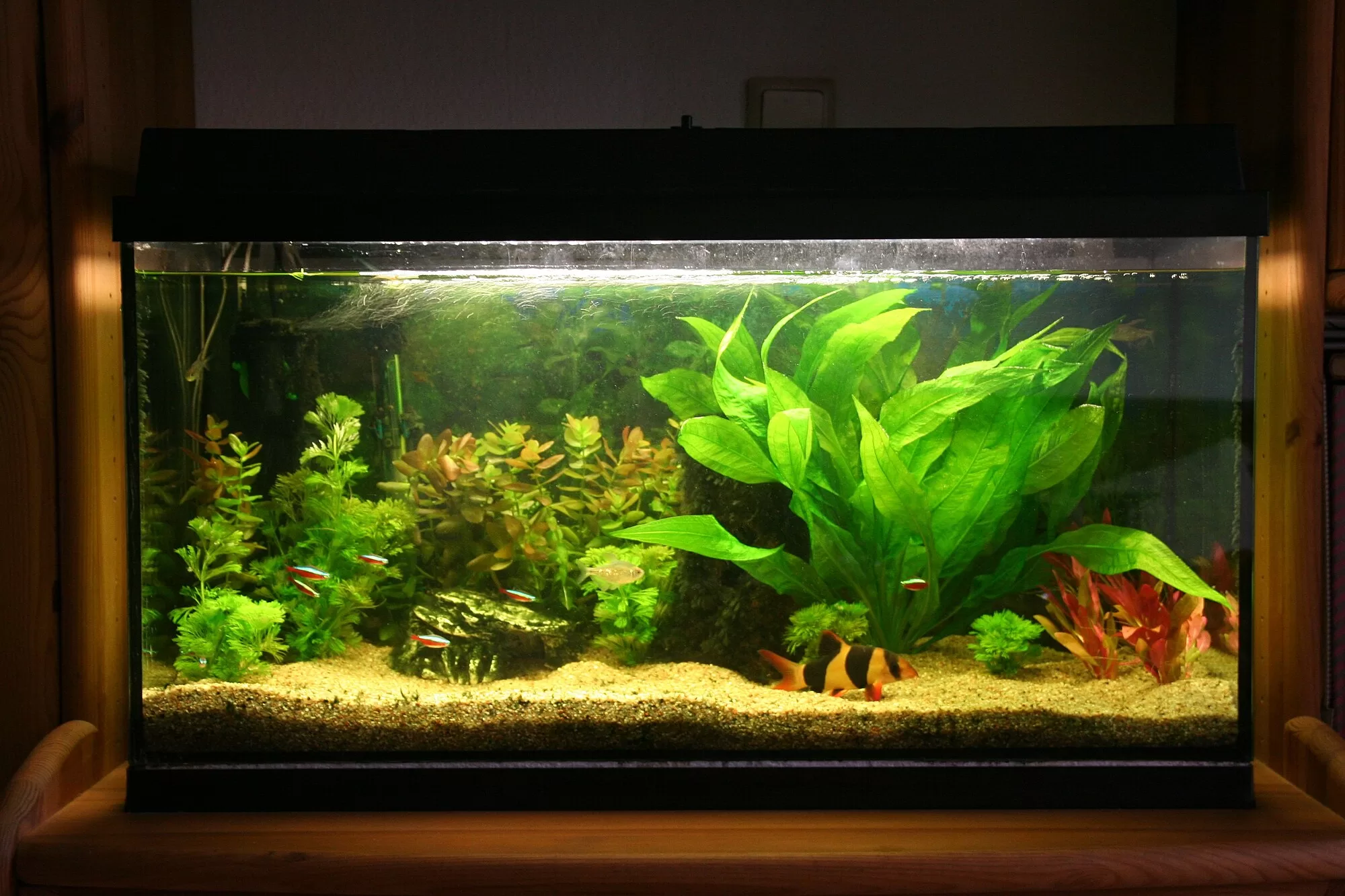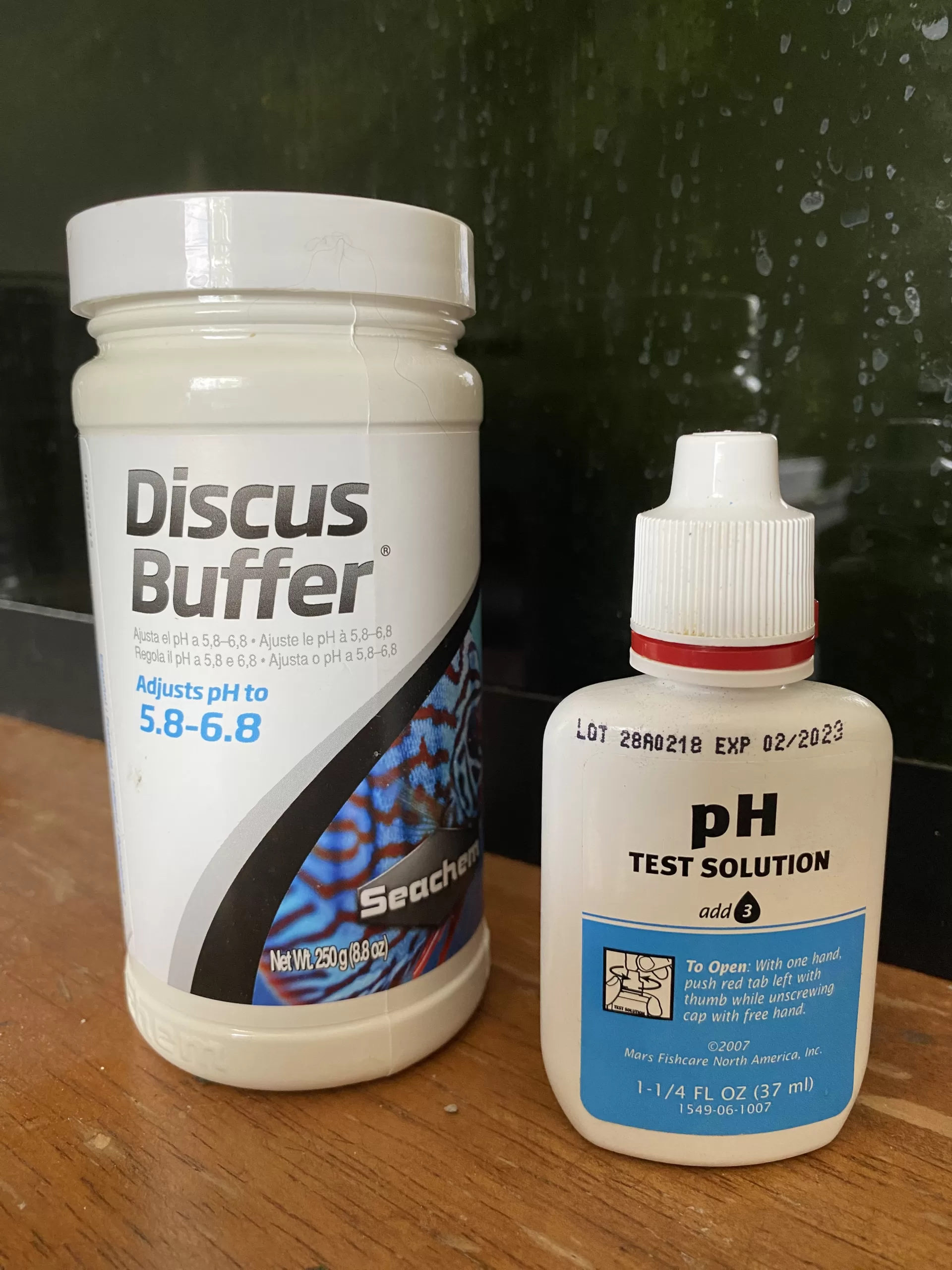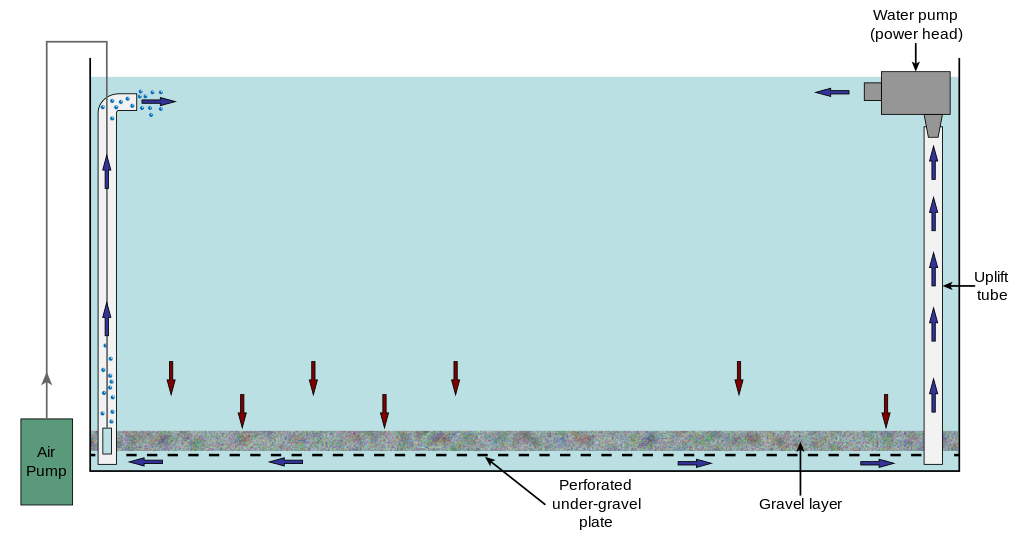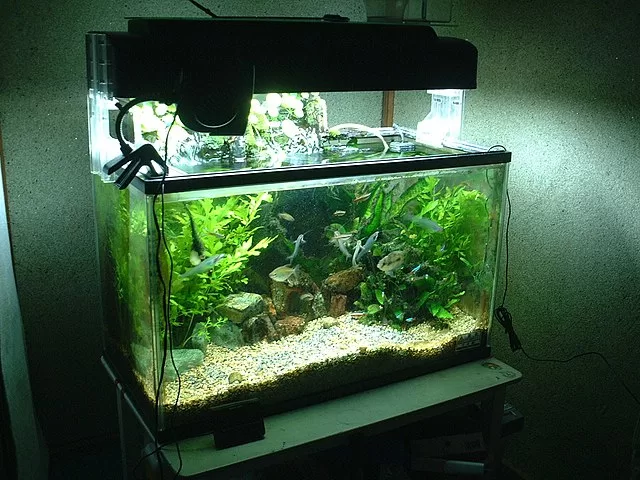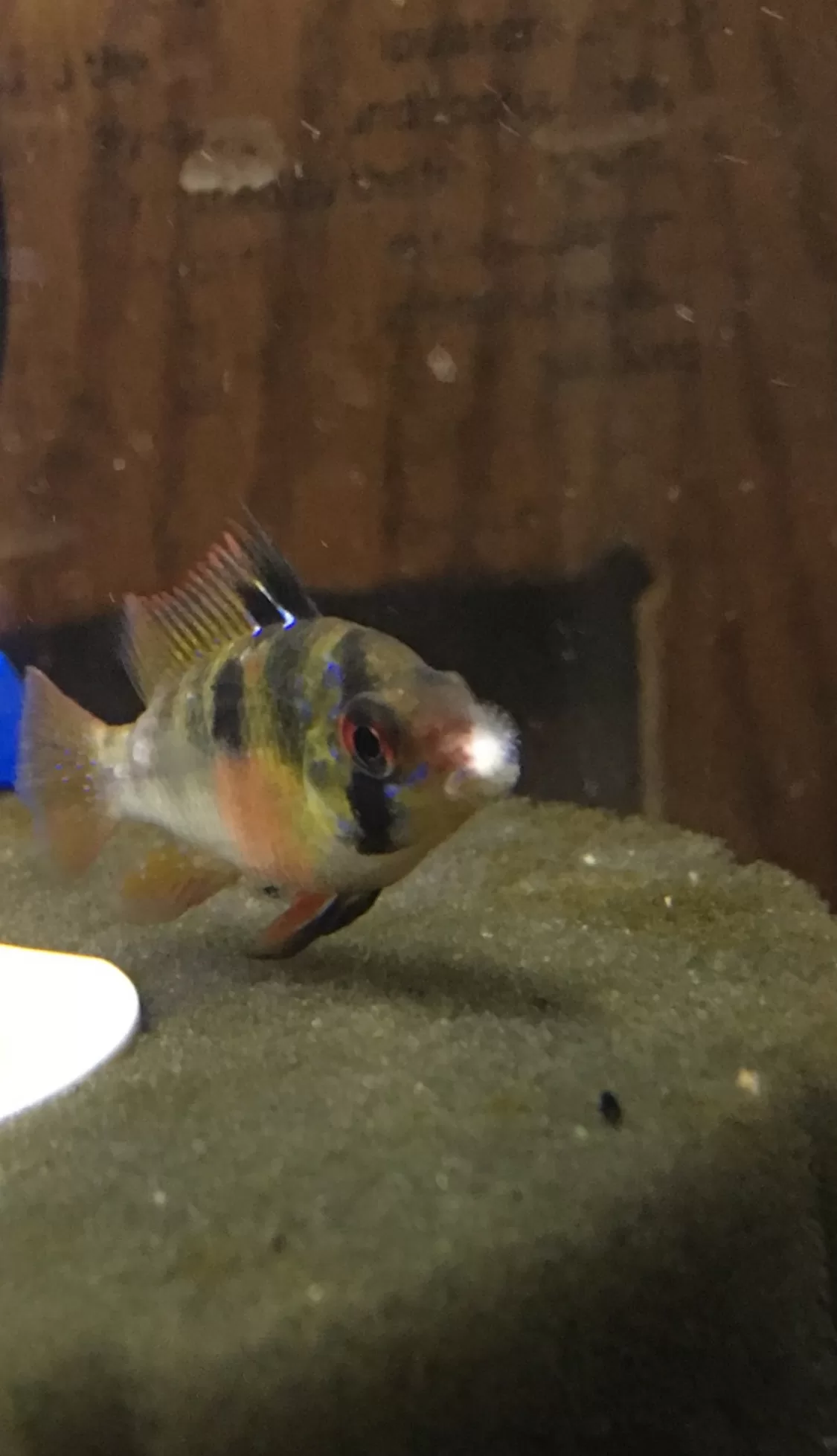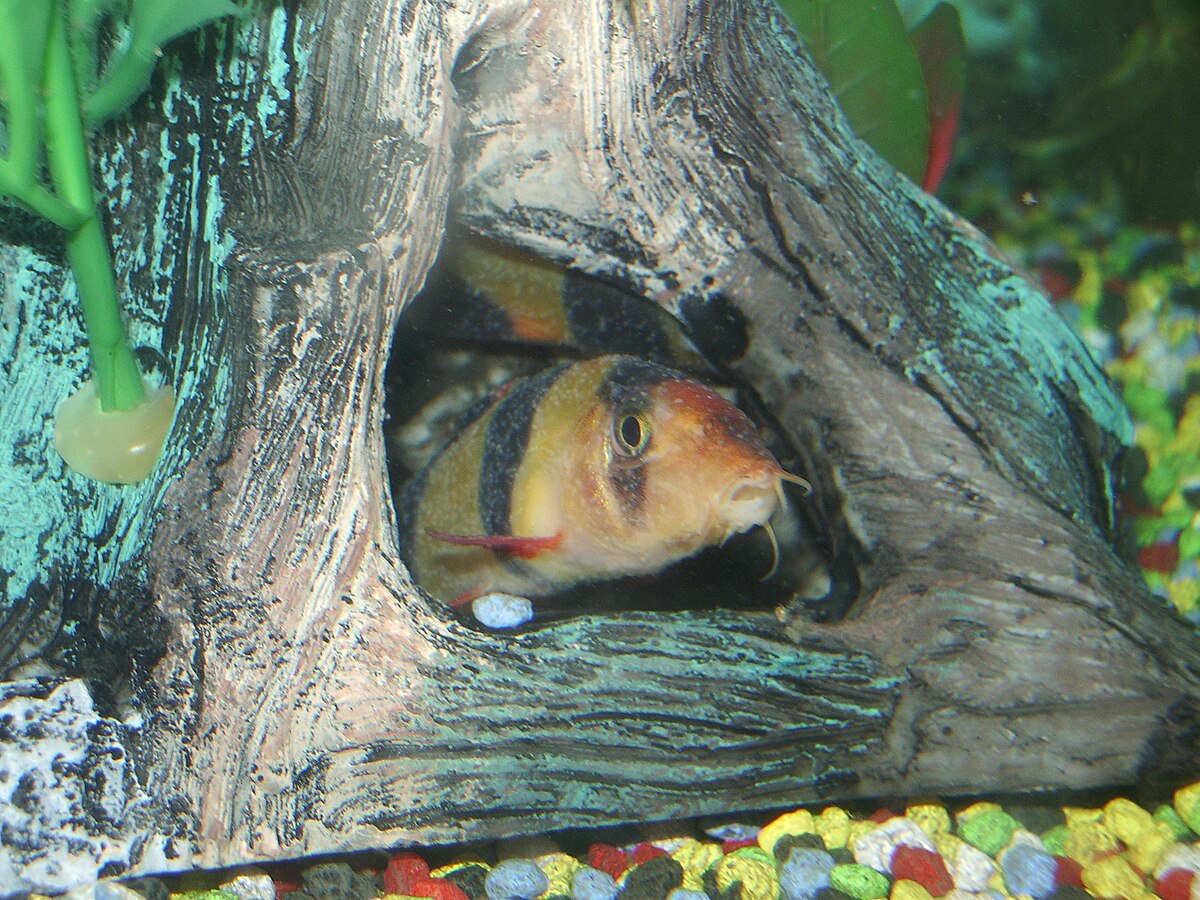I’ve always felt that people who enjoy fishkeeping usually enjoy plants and gardening. Whether that be aquarium plants, or maybe in a vegetable garden. There’s a word for combining the two actually, it’s called hydroponics, and it’s becoming more and more popular. Getting into planted tanks might seem a bit overwhelming, but the key is to start small with hardy, easy to grow aquarium plants and go from there.
With that said, let’s go over the top 10 easiest aquarium plants for beginners that anyone can grow, no CO2 required!
Top 10 Easy Aquarium Plants
Anubias (Anubias Barteri)
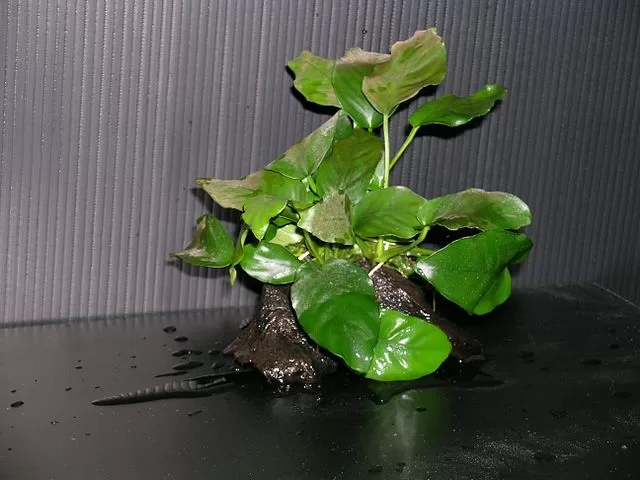
Anubias is by far one of the easiest aquarium plants. You can pretty much just keep this plant in the dark with no fertilizer and it will still do fine.
Why It’s Easy:
- Low Light Requirements: Anubias does fine in low-light conditions. I actually have a several-year-old Anubias plant in a 55-gallon with a couple of fish that I don’t even turn the light on for, nor do I dose any fertilizer.
- Slow Growth: Because it grows so slowly, at least under low-light/nutrient conditions, you don’t have to prune or do much maintenance on it at all.
- Hardy: Anubias is quite hardy and is not sensitive to pH and temperature like a lot of plants are.
- Attachment to Decor: As a rhizome plant, it has a special stem and root system that spreads horizontally. The rhizome can be superglued or siliconed to whatever decor you want in the aquarium so that it doesn’t float away. Ideally, you don’t want to plant the rhizome in dirt or gravel because it can rot.
Care Requirements:
Care requirements are pretty simple and flexible, as Anubias is highly adaptable, easy to grow aquarium plant.
Ideally, the water temperature should be between 68 and 84 F (20 to 29 C), and the pH between 6.0 and 8.0, but this is best case scenario. Anubias does well in low to moderate light, and in my experience, too much light will cause algae growth on the leaves. Like most plants, Anubias does appreciate fertilizer, so using a high-quality all-in-one fertilizer like Easy Green is beneficial. Just don’t overdo it and promote algae growth!
Java Fern (Leptochilus pteropus)
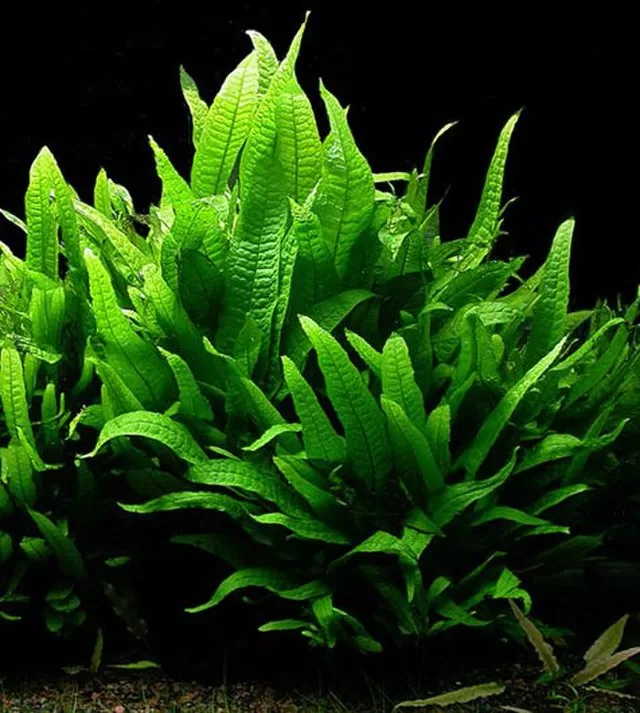
Why It’s Easy:
- Low Light Plant: Like Anubias, Java Fern does well even in low light conditions, therefore you don’t need any fancy/powerful aquarium lights.
- Toughness: This plant is well known for taking a beating so to speak, it can handle a lot of things most other plants cannot. This is similar to Anubias. For example, it does fine with a wide range of pH and temperatures. This makes it a great plant for beginners.
- Non-Substrate Rooting: Like Anubias, Java fern is a rhizome plant that does best when attached to something like a rock or piece of wood, instead of buried in the sand or gravel. Burying it might cause the rhizome to rot and it feeds directly from the water column.
- Slow Growth and Minimal Upkeep: Java Fern grows super slowly even under optimal conditions, which means you hardly have to worry about pruning or upkeep.
Care Requirments
Java Fern does well in similar conditions as Anubias. Temperatures between 68 and 84 F (20 to 29 C), with a pH between 6.0 and 8.0. Again, these are best case scenario and it will still be okay slightly outside of these ranges.
Java Fern is best with a low to moderate light, and too much light makes them a magnet for beard/hair algae, so be sure to not overdo it.
Java Fern feeds through the water column and shouldn’t be buried in gravel, like Anubias. It can benefit from an all-in-one fertilizer, but usually will be fine without it.
Amazon Sword (Echinodorus grisebachii)
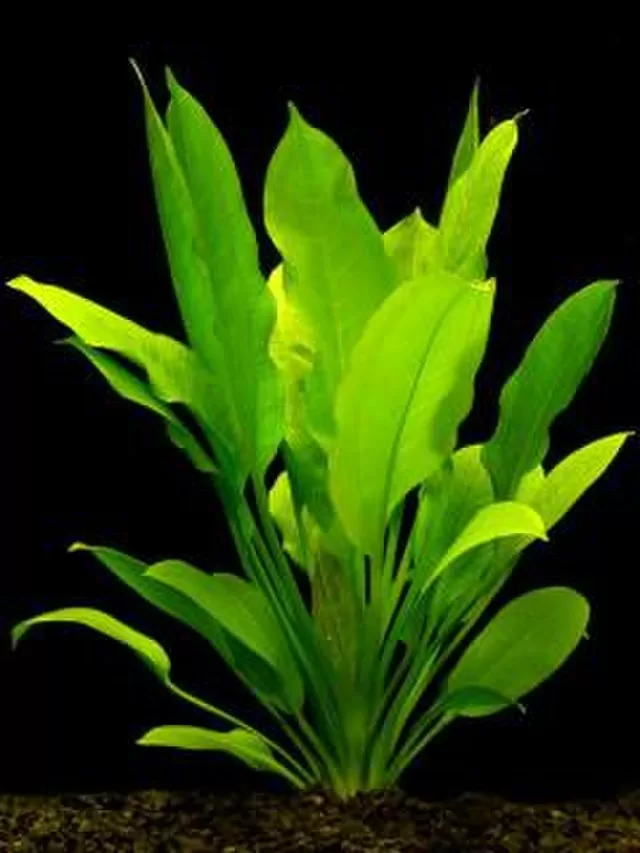
Why It’s Easy:
- Substrate Rooting: Unlike Anubias and Java fern, Swords can be planted directly in the substrate. This plant tends to form an incredible root system where it feeds from. Amazon Swords do best with nutrient rich substrate, or with gravel and root tabs.
- Adaptable Light Requirements: While it’s definitely possible to keep in a low light setup, Swords do best in moderate to high light. Without this they don’t grow very fast and don’t look as vibrant. It doesn’t have to be a fancy expensive light, just a full spectrum one.
Care Needs:
Amazon Swords can adapt to a lot of different conditions, but does best between temperatures of 70 to 82 degrees F, with a pH of 6.0 to 8.0. I’ve personally been able to grow it just fine with a pH around 8.4. The most important thing for Swords is proper nutrients.
While Swords can do okay with low light, they will grow pretty slow, which isn’t necessarily a bad thing for everyone. They do much better with moderate to high, full-spectrum lighting. Because it can grow so tall, it’s best to use shorter tanks with low lighting, like 20 gallon longs. If you’re doing a high light setup, a 29 gallon is better because of its height. It makes an absolutely fantastic background plant that provides a ton of shelter for fish.
For optimal growth use a nutrient rich substrate or fertile tabs if you’re using gravel. These plants will grow a vast root system throughout the aquarium, so it’s important that the root system gets proper nutrients. An all in one liquid fertilizer/root tab combo will do the trick and make it grow well. CO2 is beneficial, but totally optional. I would only recommend CO2 in a high light setup.
Propagation is easily done by removing dead or dying leaves. It’s important to know that Sword plants are known for melting when you first plant them because they were grown out of water. They will replace their leaves with new ones under water.
Vallisneria (Vallisneria sp.)
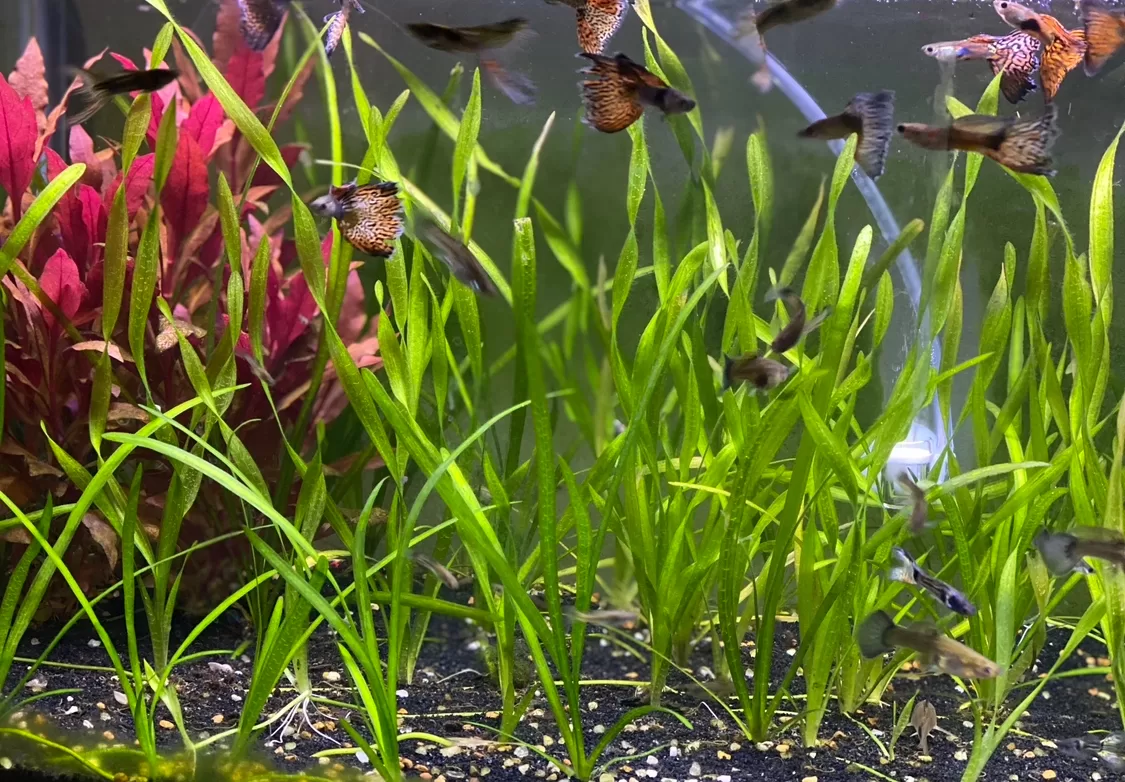
Why It’s Easy:
- Rapid Growth: Val is known for super fast growth, under the right conditions, and will quickly create a “jungle” look in your tank. In the image above, you’ll notice that the plants seem to be interconnected by a stem. These are called runners, and that is how Vallisneria creates new plants by itself.
- Substrate Rooting: These substrate rooters will feed and anchor themselves into the substrate, however, they are very easy to remove if you want to thin it out or move them around.
- Propagation: As mentioned before, Vallisneria propagates very easily with no help by sending out “runners” that root and form new plants. So under the right conditions, the plant will spread itself through your aquarium.
Care Needs:
Val is adaptable to temperature and pH, but it can be a bit more sensitive and demanding when it comes to lighting and nutrients. The ideal temperature range is 68 to 82 degrees F (20 to 28 C), with a pH between 6.0 and 8.5. Val also appreciates moderately hard water.
While can survive in a low light setting, it really doesn’t do great and you’d be much better off, using moderate to high lighting. This way, it will spread around the tank faster and grow much taller.
Val can grow in any substrate, gravel or sand, but it does benefit from more nutrient dense substrate. If you’re using gravel or sand, root tabs are a good idea.
Lastly, CO2 is not required, but it’s recommended if you’re running a high light setup.
Cryptocoryne (Cryptocoryne wendtii)
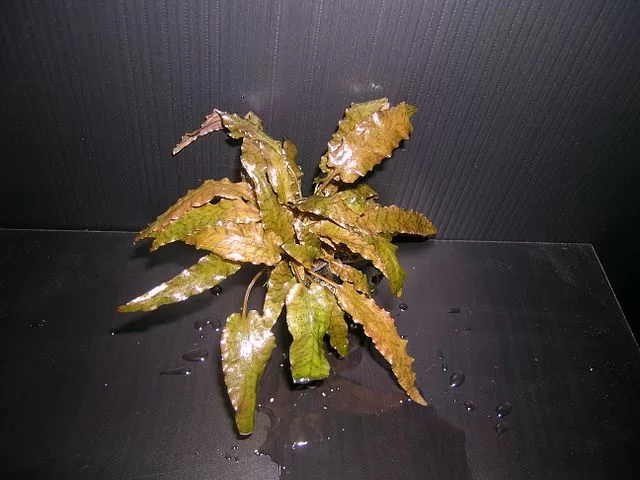
Why It’s Easy:
- Adaptable and Hardy: Cryptocoryne is a beginner-friendly plant that can adapt to a lot of different water conditions like temperature, pH, and most notably it does well in a low light setting, so you don’t need a fancy light for this plant. This makes it very popular for beginners who aren’t looking to drop hundreds of dollars on an expensive light.
- Substrate Rooting: Crypts are easy to just pop in the substrate and let them do their thing, nothing special required. Like most regular rooted plants, they do best with nutrient dense soil or root tabs if not. They also benefit from liquid fertilizer in the water column.
Care Needs:
Cryptocoryne does best between 72 and 82 degrees F (22 to 28 C) and a pH between 6.0 and 8.0. However, it can tolerate temperatures slightly cooler or warmer, and a pH slightly higher as well. It will do fine in soft or hard water as well.
Similar to Anubias and Java Fern, Crypts do best with low to moderate light, and are good for filling in shadier parts of your tank.
As mentioned above, they are not too nutrient demanding, but will appreciate nutrient rich soil or root tabs. At the very least, a liquid fertilizer with sufficient iron should be dosed in the tank.
Crypts don’t care to be messed with and if you bother them too much they might melt, so aside from removing dead or dying leaves, try to leave it alone.
Bacopa (Bacopa monnieri)
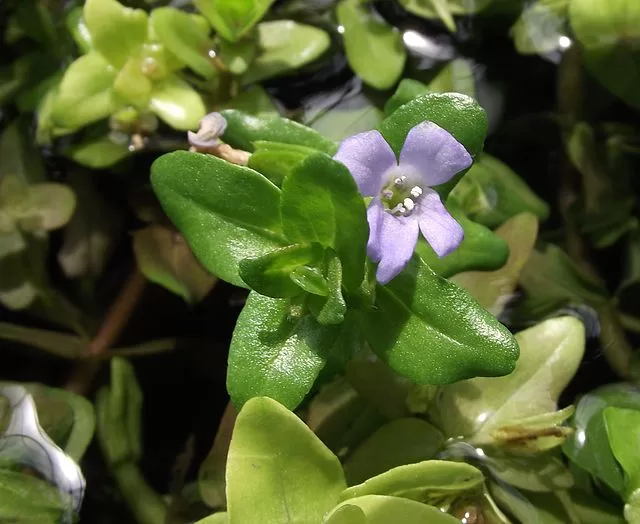
Why It’s Easy:
- High Growth Rate: Bacopa grows very fast under the right conditions. It can be used to quickly fill the background of your aquarium, which will form a very dense and lush look for your tank.
- Lighting Flexibility: Bacopa prefers moderate to high lighting, but it can be grown under a low light setting if you don’t have a high-tech tank. However, this will definitely not grow as fast or look as dense.
- Floating or Rooted: One of the best things about Bacopa is that you can either plant it in your substrate or you can just let it float in the tank. Letting them float is usually something you would see in a breeding or fry tank because it gives them a lot of cover. This is also a good method if you have a low light tank.
- Easy Propagation: As a stem plant, you can easily propagate Bacopa by snipping off the top part and then just replanting it in the substrate. It will then grow roots and become its own plant. Do this over and over and you can turn one plant into dozens.
Care Needs:
Bacopa will do fine with a range of different water conditions. The optimal temperature for this plant is 68 to 82 degrees F (20 to 28 C), and a pH of 6.0 to 7.5. While it can handle a higher pH, once you go above 7.5 it doesn’t tend to do as well in my experience. It seems to look more stemmy and with fewer leaves, so overall it looks less dense.
As we talked about before, Bacopa really prefers moderate to high light, although it can still be grown with a low light, it won’t look as lush and full. With the appropriate light and nutrients, it can even form a flower underwater like it normally does above water. Personally, if I am growing stem plants, I never try a low light set up because they just end up having fewer leaves and don’t look good.
If you want to plant Bacopa in the substrate, usually you’ll have better success if it’s nutrient dense, otherwise in my experience, it won’t root and will try to float again because the water column has the nutrients in it. CO2 is not required, but if you do use it you will see insanely fast growth.
Regular pruning is necessary to prevent becoming overgrown and shading other parts of your aquarium, all you have to do is trim the top of the plant, sort of like giving it a hair cut.
Hornwort (Ceratophyllum demersum)
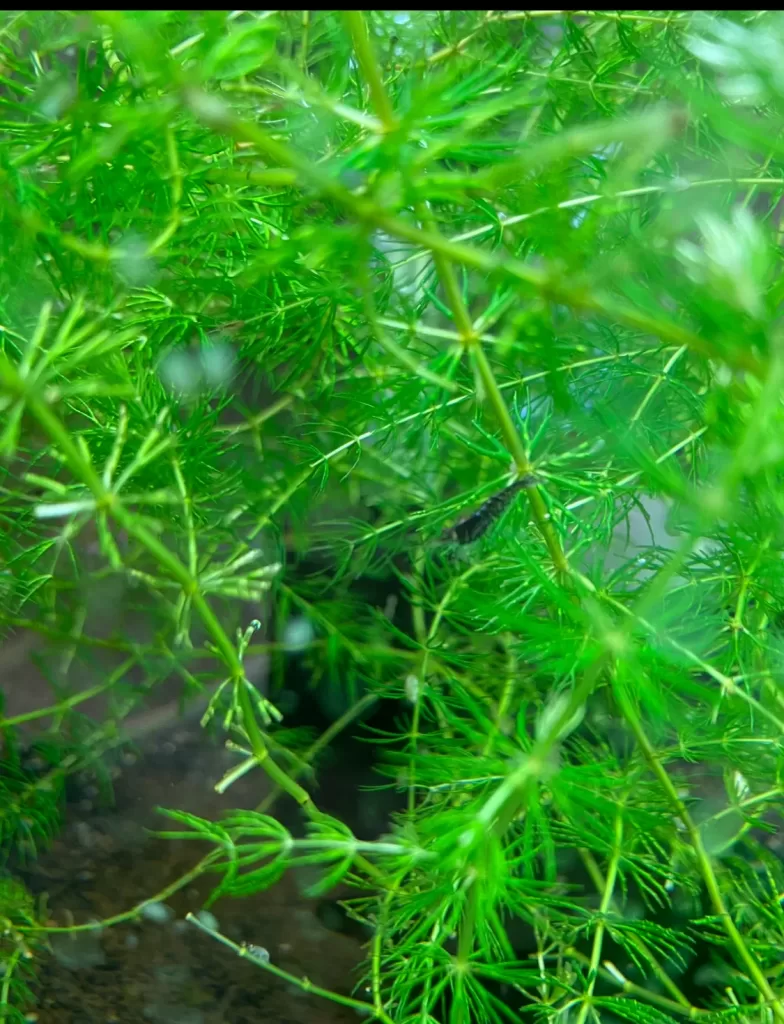
Why It’s Easy:
- Rapid Growth & Easy Care: Hornwort grows crazy fast and is very easy to care for, just give it what it needs and it will grow like crazy. Hornwort is also effective at nitrogen removal because to fuel its fast growth it absorbs a lot of nutrients from the water.
- No Substrate Needed: Unlike many plants, Hornwort does not grow roots and therefore prefers freely floating in the aquarium. It’s thought that because it can partially stick out of the top of the water, it’s doing that for CO2. Usually, if you try to plant it in the substrate it will just rot where it’s buried.
- Temperature/pH Flexibility: Like most easy aquarium plants, Hornwort is highly adaptable to different temperatures and pH as long as it has proper nutrients and lighting.
Care Needs:
Hornwort can survive in an even larger range of temperatures than the other plants on the list, with a range of about 59 to 86 degrees F (15 to 30 C). This means that it can be used in most types of setups, cold water or tropical, and still do well. It prefers a pH of 6.0 to 8.0, however, I have personally grown it at 8.4 and it was long enough to make the necklace below.
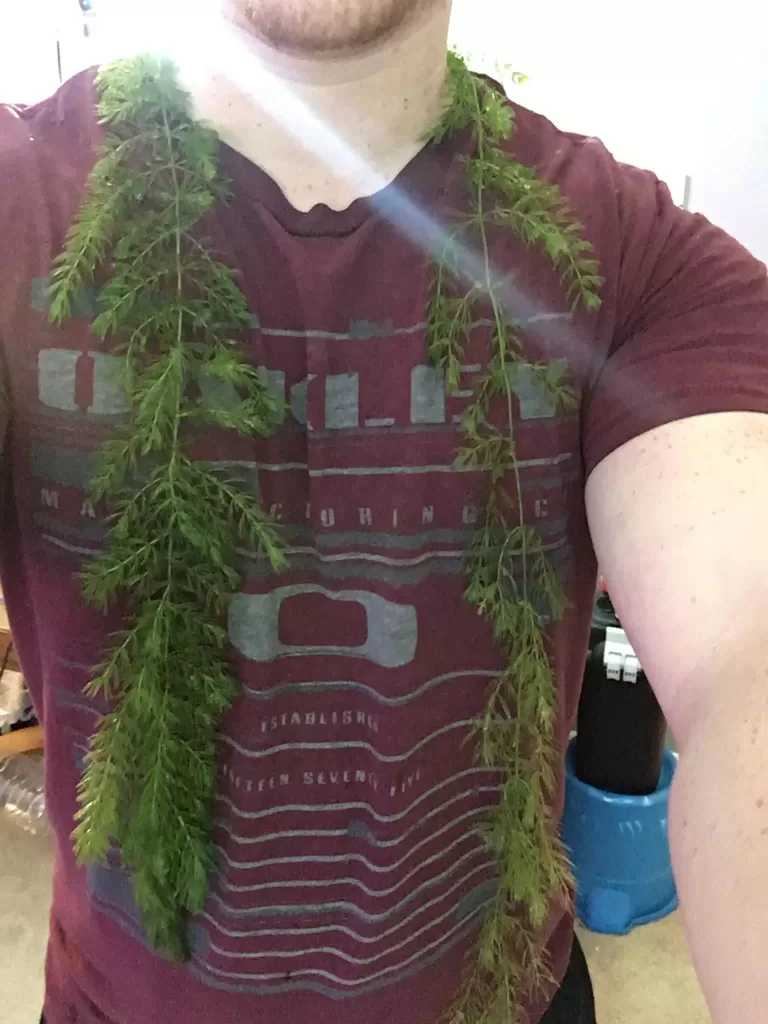
While you might get away with lower light, you will likely have a lot of shedding/melting, which is a total mess and it creates a lot of detritus in the tank. Basically what I mean is that the needles will fall off and make a mess.
Hornwort is fairly straightforward with nutrients, a good all around fertilizer and nitrogen (from fish will suffice) is all you need. The more powerful the lighting, the more nutrients it will require.
To keep Hornwort in check, I usually just remove some and throw it away or put it into another tank. It can quickly overwhelm the tank if it’s happy. You can also propagate it by simply cutting it into smaller pieces.
As long as you have the basics, Hornwort is one of the easiest floating aquarium plants.
Water Wisteria (Hygrophila difformis)
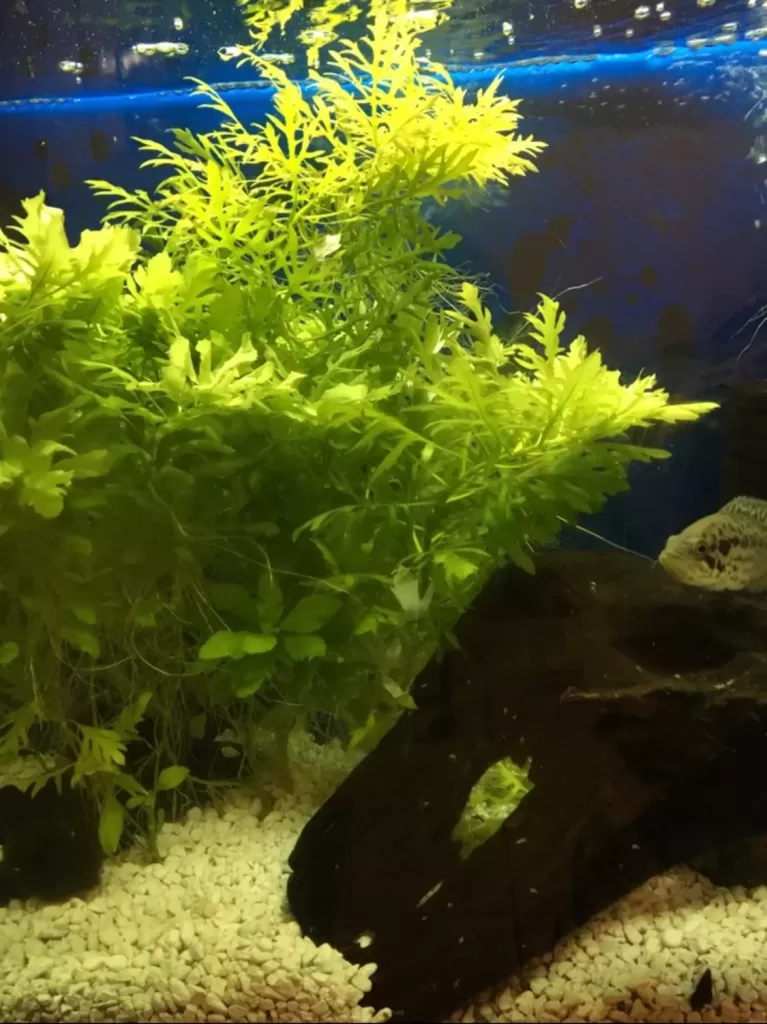
Why It’s Easy:
- High Growth Rate: As with most stem plants, water Wisteria grows incredibly fast under the right conditions. Not only does it grow fast, but when it’s happy it grows incredibly dense (like above) and provides awesome cover for fish.
- Versatility in Planting: Another attractive feature for beginners is the ability to plant Wisteria in the substrate or just leave it floating. When left floating the roots will grow long and find something to anchor to or in. Personally, I don’t find it to be the most attractive look versus planting it in the substrate, but some people might like it.
- Adaptability: It should be no surprise that Wisteria is incredibly hardy and easy to grow. The only thing I will say is that if your pH is above 8.0, it doesn’t do very well, and doesn’t get very bushy. When I tried to grow it at a pH of 8.4 it didn’t grow very many leaves along the stem, therefore did not have a thick appearance.
Care Needs:
Water Wisteria does best between 70 and 82°F (21 to 28°C), and a pH between 6.0 and 7.5. Like I mentioned before, it doesn’t do well with a pH above 8.0. This could probably be doable if you are running CO2 in your tank because that will lower the pH.
This is the first plant on the list that I would say won’t do very well with a low light set up. If you don’t have enough light, it will tend to grow tall and skinny because it’s trying to reach the light. Using a moderately strong aquarium light that is full spectrum is minimum. You might be able to get away with a weaker light if you let it float instead of planting it in the substrate.
Moss Balls (Aegagropila linnaei)
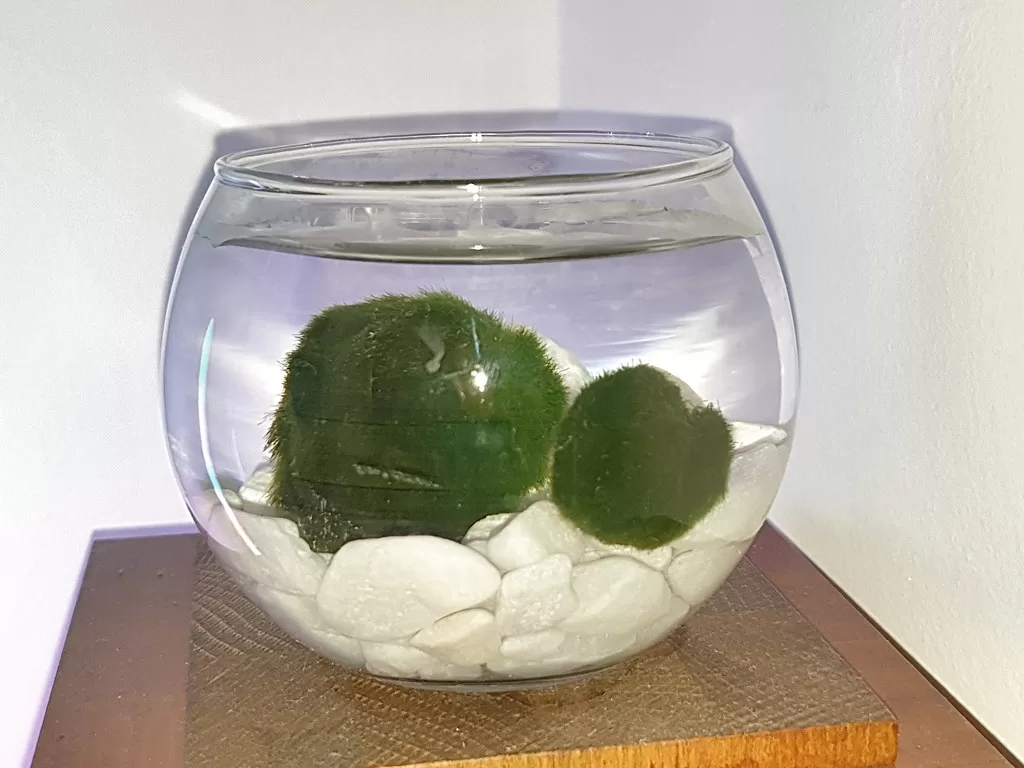
Why It’s Easy:
- Minimal Care Requirements: Moss balls are probably the easiest aquarium plant out there. You basically don’t need to do anything and it will be fine with just a little bit of light and a little bit of nutrients.
- Water Quality Benefits: Like most aquatic plants, moss balls can help to improve water quality, especially when you’re able to fit many of them in a small amount of water. They also seem to catch and trap debris in the water.
- Aesthetic Appeal: They’re unique and they add a little bit of decoration to your tank.
- Long Lifespan: Moss balls grow very slow and they live for many years with minimal care.
Care Needs:
Moss balls prefer a little bit cooler water from 68 to 77°F (20 to 25°C), and a pH between 6.0 and 8.0. However, they can tolerate colder and warmer temperatures, as well as adapt to varying levels of pH.
Low to moderate light is all that a moss ball needs. So if you have a light that came with your aquarium kit or a similar weaker light, this would be a good plant for you.
Moss balls don’t need liquid fertilizer or anything special other than water changes to replenish the nutrients and minerals that are found in most people’s tap water.
After a while, they can get covered with debris and even flatten on one side, so it’s important to gently squeeze them and roll them around to clean and prevent them from flattening. They’re actually formed by rolling strings of algae.
Dwarf Sagittaria (Sagittaria Subulata)
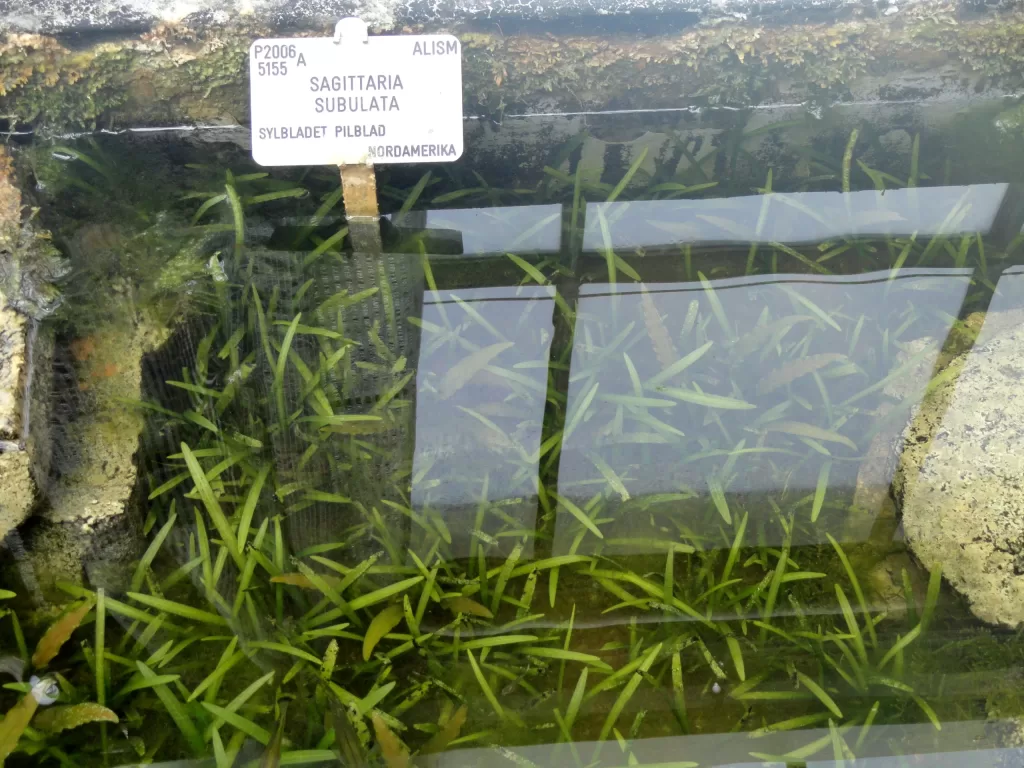
Why It’s Easy:
- Rapid Growth and Self Propagating: Dwarf Sagittaria grows very fast under the right conditions, and propagates itself by shooting out “runners” just like Vallisneria. This means that Sagittaria is a good choice for someone looking to fill in their tanks quickly.
- Easy to Care For: Dwarf Sagittaria is very easy to care for as long as you give it what it needs, which is not too much. Aside from meeting its light and nutrient requirements, the only other thing you have to do is give it a trim once in a while if it gets out of control.
Care Needs:
Dwarf Sagittaria does best with a temperature between 68 to 82°F (20 to 28°C), and a pH between 6.0 and 7.5. Outside of these ranges, it probably won’t do very well.
Just like Val, dwarf Sagittaria prefers, moderate to highlight and typically does not do very well under a low light setting. With low light, you’ll see less growth and less runners. Personally, I believe this is another plant that really shouldn’t be kept in a low light set up.
You’ll want to use nutrient dense soil or root tabs, as this plant feeds from the substrate through its roots. In addition to root tabs, it’s a good idea to also use a liquid fertilizer in your water.
In terms of maintenance and pruning, you really don’t have to do much other than remove dead leaves, and even dead plants. Sometimes they will send out runners and some of them will die.
Picking hardy Beginner Aquarium Plants
These 10 plants are, in my opinion, the best aquarium plants for somebody new to planted tanks and looking for hardy and beginner-friendly choices.
Most of these plants can be grown with a moderate light and liquid fertilizer, no CO2 or anything special.
So think about what kind of planted tank you want, whether that be a low light, low tech tank or a high-tech, high light tank, and choose plants accordingly. Technically if you do it correctly, you can have low light plants in a high light set up if you use other plants to shade the other plants.

